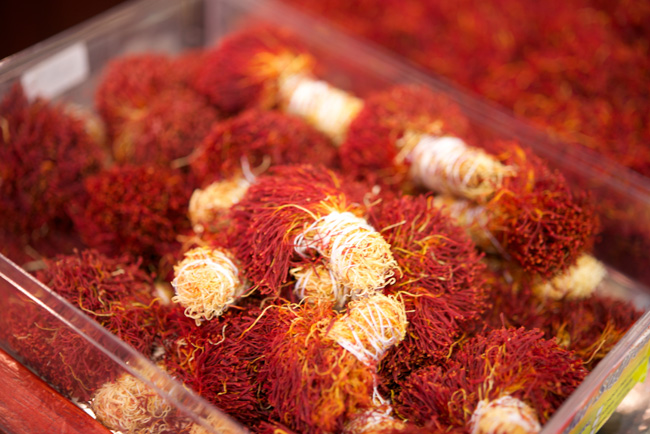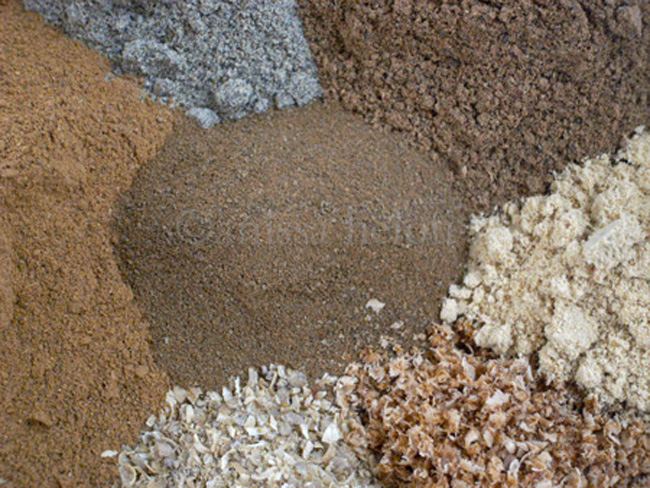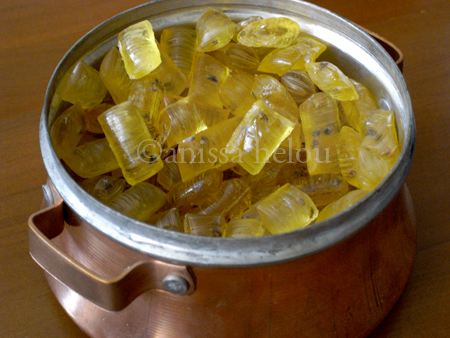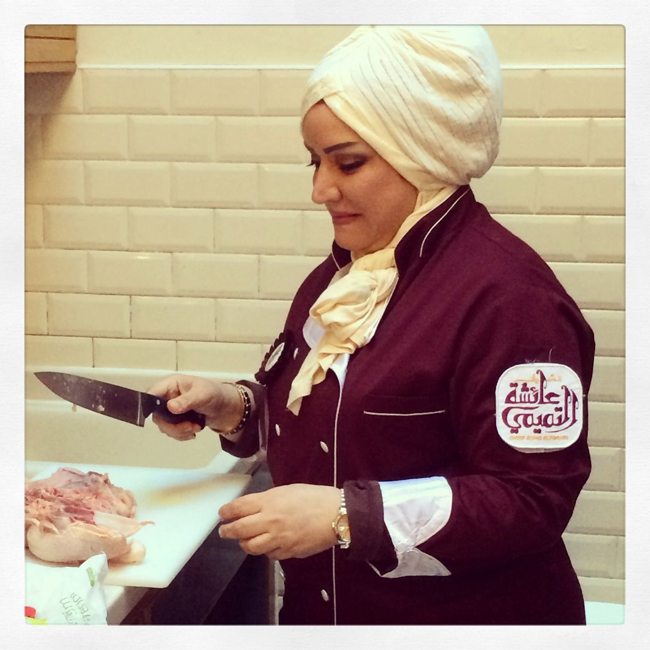18 Mar
 Yesterday I was taken to buy saffron by my wonderful friend, Maryam Abdallah, Qatar’s first TV chef and a wonderful cook and educator. On the way, she gave me a wonderful tip on how to make sure I am buying real saffron which I thought I would pass on. Now, you probably don’t need to know this if you are buying saffron pre-packed by the gram but you better know it if you are going to buy saffron in industrial quantities the way they do in the souk. It’s very simple. All you need to do is ask the vendor for 3 or 4 threads of saffron which you put on your tongue and suck on for a few seconds. You then spit the threads out onto a clean tissue and rub them inside the tissue. If they colour it yellow, you know you are buying real saffron. If they colour it red, you are being sold coloured threads that have nothing to do with saffron. I wish my friend who recently brought me tons of saffron from Morocco knew this because he would have avoided buying a whole lot of fake saffron with only a few real threads in between for the smell! The top picture is of how they sell saffron here in Qatar, bunched up in ‘bouquets’ of 10 grams and below is a picture of my test to make sure I was not being sold fake saffron!
Yesterday I was taken to buy saffron by my wonderful friend, Maryam Abdallah, Qatar’s first TV chef and a wonderful cook and educator. On the way, she gave me a wonderful tip on how to make sure I am buying real saffron which I thought I would pass on. Now, you probably don’t need to know this if you are buying saffron pre-packed by the gram but you better know it if you are going to buy saffron in industrial quantities the way they do in the souk. It’s very simple. All you need to do is ask the vendor for 3 or 4 threads of saffron which you put on your tongue and suck on for a few seconds. You then spit the threads out onto a clean tissue and rub them inside the tissue. If they colour it yellow, you know you are buying real saffron. If they colour it red, you are being sold coloured threads that have nothing to do with saffron. I wish my friend who recently brought me tons of saffron from Morocco knew this because he would have avoided buying a whole lot of fake saffron with only a few real threads in between for the smell! The top picture is of how they sell saffron here in Qatar, bunched up in ‘bouquets’ of 10 grams and below is a picture of my test to make sure I was not being sold fake saffron!
4 Dec
Compared to twenty years ago when I started writing about food when ingredients like frikeh (or freekeh) and argan oil were known to only a few westerners, there are now less and less secret ingredients, or indeed cuisines. You would think that with diners’ enthusiasm for global dishes and ingredients there isn’t much left for chefs or keen cooks to discover. But there is. And this is what we did last month at Books for Cooks, when I and Nadya Saleh from the National Museum of Qatar‘s Food Forum together with the delightful and very talented Aisha al-Tamimi introduced a keen audience to Qatari dishes they were totally unfamiliar with. The two cooking demonstrations were led by Aisha and were part of Nour Festival and Qatar UK, the latter being a collaboration between Qatar and the UK to exchange cultural and art events while the former is an initiative by the London Borough of Kensington and Chelsea to showcase Middle Eastern art and culture.
29 May

Yesterday, one of my readers asked about the Lebanese 7-spice mixture asking what it was made of and if I had a recipe. I remembered making it one year at WOF but for some reason I couldn’t find the recipe. So, I looked in some of my Lebanese books but I drew a blank. Then, I went online but most recipes included fenugreek which is a definite no no, so, I resorted to calling my mother in Lebanon. I knew she wouldn’t have a recipe – she would have given it to me otherwise for my Lebanese book where I only have a description of the mixture which varies from family to family and from one region to the other; the classic mix is made of ground black and white pepper, allspice, cinnamon, cloves, nutmeg and coriander. However, I also knew that she bought her spices at a great mat’haneh (a place where they grind spices as well as coffee and where they also sell pulses, and cheap drugs, grains and rice) near my uncle’s home in Achrafiyeh and I asked her to call them for the recipe. And being the best and most beautiful mother, she did. And for you Sam, here is the recipe which is slightly different from the one I describe in my book in that it has ginger!
4 Mar

I had been wanting to meet Najaf Daryabandari ever since a London friend had told me about the fascinating lunch he’d had with him in Tehran. Najaf is a distinguished academic who has translated many classics and also written a two-volume tome on Iranian cuisine. My friend had lost his contact details but fortunately Nasrine, my Iranian friend knew him and it wasn’t hard to set up a meeting with him except that by the time I got to Tehran, Najaf was in the middle stages of dementia. He was still able to explain about his book and Iranian cuisine but his mind would wander every few minutes and he would fall silent for quite some time that by the end of my visit, I knew there was no chance I could cook with him. Still, I loved meeting him and his charming son Sohrab and like all Iranians, their hospitality was delightful. Amongst the many things they offered us with tea were these amazing cardamom-flavoured hard candy called abnabat. Nabat means sugar and ab water and the name literally means sugar water. They can also be made with saffron which must be very luxurious or other flavourings. And of course, I immediately rushed to Tavoz to buy a bag which lasted a very short time. You can buy them online and I am sure you can also find them in London, perhaps even at Persepolis in Peckham, or other Persian shops!


